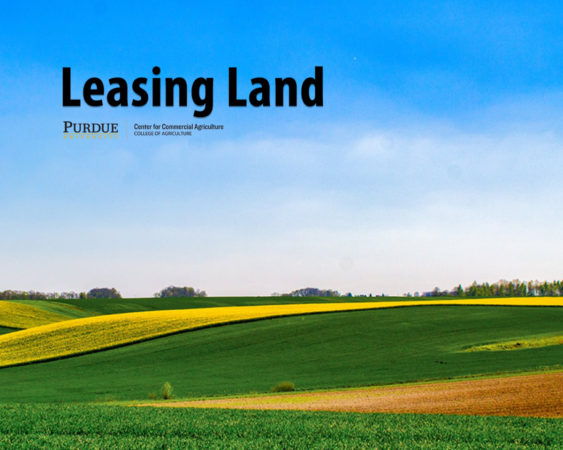October 14, 2019
Should I Use an Annual or a Multi-Year Cropland Lease?
A vast majority of cropland leases are in effect for only one year. One of the reasons for this is the predominance of oral leases which are typically not valid for more than one year. Multi-year leases provide incentives for tenants and landowners to invest in long-term improvements, maintain soil fertility, and encourage conservation practices. This article will discuss why you may want to consider multi-year leases and discuss factors that influence leasing terms.
Before discussing the financing of improvements and factors that influence lease terms, we will first briefly describe some key improvements that may be needed on rented ground. Improvements may be related to fertilization, lime, farm structures and repairs, and/or drainage. The residual value of fertilizer, particularly P and K, may last beyond the year of application. With a one-year lease, it may be important to specify carry-over fertilizer levels in the lease. Lime typically lasts several years so there is likely to be some value past the length of the lease. Farm structures and drainage may include fences, terraces, tile lines, machinery storage, and/or grain bins. The useful life of lime, farm structures, and tile drainage is likely longer than the length of the lease. This fact needs to be accounted for in the terms of the lease.
There are several ways to handle the financing of improvements within cropland leases. First, the landlord may pay for the improvement as part of the rental agreement, with the understanding that the rental rate will be higher to compensate for the improvements. Second, the cost of each improvement may be shared between the landowner and tenant. If part of the work is done by the tenant, he or she should be compensated for this work. Also, a lease provision describing how the tenant gets reimbursed by the landlord for the undepreciated value of the improvement at the end of lease term should be included in the cropland lease. The undepreciated value is computed using the initial cost of the improvement and a depreciation rate that reflects the improvement’s useful life. Third, the cost of improvements may be paid for by the tenant. Again, under this approach, the tenant should be compensated for the undepreciated remaining value of the improvement. It is also common for a tenant to negotiate a lower rental rate when using this approach.
Where do multi-year leases fit? Often, an improvement gets delayed or does not get made because an equitable sharing of the expense can not be agreed upon. Long-term leases provide landlords and tenants an incentive to invest in improvements, and maintain soil fertility and conservation structures. They also mitigate the uncertainty associated with frequently building new relationships. As noted above, if a lease is not longer than one year, it is extremely important to adjust leasing terms such as the annual rent and to account for the undepreciated value of an improvement at the end of the lease.
TEAM LINKS:
PART OF A SERIES:
RELATED RESOURCES
UPCOMING EVENTS
We are taking a short break, but please plan to join us at one of our future programs that is a little farther in the future.
